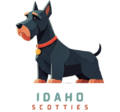Dogs bark for various reasons—fear, excitement, territorial instincts, or seeking attention. If a dog starts barking at you, staying calm and handling the situation properly can make a big difference. Here’s a step-by-step guide to help you de-escalate the situation effectively.
1. Stay Calm and Avoid Sudden Movements
Dogs are highly sensitive to human emotions. If you react with fear or aggression, the barking may escalate. Instead:
- Take a deep breath and remain still.
- Avoid making direct eye contact, which can be seen as a challenge.
- Keep your posture relaxed and non-threatening.
2. Identify the Reason for Barking

Understanding why the dog is barking can help determine the right approach:
- Fear or Anxiety: The dog may feel threatened by your presence.
- Territorial Behavior: The dog sees you as an intruder.
- Attention-Seeking: The dog may want food, play, or affection.
- Excitement: Some dogs bark when they are overly excited or stimulated.
3. Use a Calm and Soft Voice
Instead of yelling, which can further agitate the dog:
- Speak in a soothing, low-tone voice.
- Say simple phrases like “It’s okay” or “Good boy” to reassure the dog.
4. Avoid Direct Eye Contact and Turn Sideways
Direct staring can be perceived as a challenge. Instead:
- Turn your body slightly sideways to appear less threatening.
- If possible, crouch down slowly to reduce your height and intimidation factor.
5. Offer a Distraction
Distractions can help shift the dog’s focus away from barking:
- Throw a treat away from you to create a positive association.
- If you have a toy, gently toss it to divert their attention.
6. Use a Non-Threatening Approach
If you need to approach the dog:
- Extend your hand slowly for sniffing (only if the dog seems receptive).
- Allow the dog to make the first move toward you.
- Do not attempt to pet the dog immediately.
7. Create a Positive Association
If this is a recurring situation, work on building trust with the dog:
- Bring treats on future visits.
- Spend time near the dog without forcing interaction.
- Let the dog come to you on its terms.
8. Remove Triggers If Possible
If you notice specific triggers causing the barking, try to eliminate them:
- If a leash or certain object agitates the dog, avoid using it in their presence.
- If barking is due to territorial behavior, give the dog space.
9. Consult a Professional Trainer
If a dog continues to bark aggressively despite your best efforts, consulting a professional dog trainer or behaviorist can help identify deeper behavioral issues and provide expert guidance.
Final Thoughts
Barking is a natural behavior for dogs, but knowing how to handle it calmly can prevent escalation and help build a trusting relationship. Always prioritize safety and patience, and over time, you may earn the dog’s trust and reduce unnecessary barking.
If you found this article helpful, share it with other dog lovers and pet parents!
Pet trainer with a passion for helping animals and owners build strong, loving bonds through positive reinforcement and expert care.



